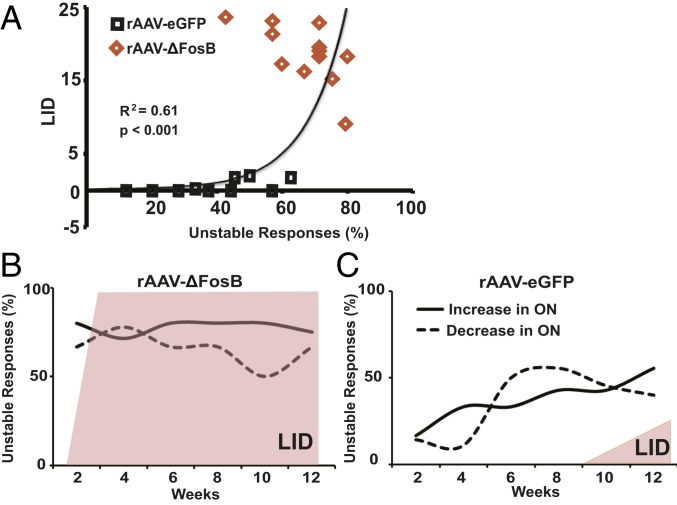Fig. 6.
Correlation between unstable SPN responses to DA and the development and severity of LID. (A) The correlation between unstable SPN responses to DA and LID scores shows a strong relationship with the appearance of mild LID following the development of ∼50% of unstable SPN responses. The regression analysis (exponential model) used averages of total LID scores paired with the percentages of SPNs with unstable responses per week in each group (control, black squares; transgenic ΔFosB, orange diamonds). (B and C) Proportions of SPNs with unstable responses to DA as recorded every week and grouped by the firing frequency change in the ON state (increase or decrease depicted as plain or dashed lines, respectively) after striatal infusion of rAAV-ΔFosB (B) and rAAV-eGFP (C). After rAAV-ΔFosB infusion (B), unstable responses to DA highly predominated in both types of SPN responders: ON-increase (D1-like SPNs) and ON-decrease (D2-like SPNs). LID (shaded area) also developed rapidly and persisted at a high level during the 12-wk assessment period, while unstable responses to DA of either type remained above 50%. After rAAV-eGFP infusion (C), unstable responses to DA progressed to reach 50% in both types of SPN responders toward the end of the testing period. Note also the size difference in LID shaded area that indicates mild and partial LID development (2 of 4 animals) in the control group. Percentages of unstable responses were calculated from all SPNs recorded every 2 wk for each group of virus infusion.

